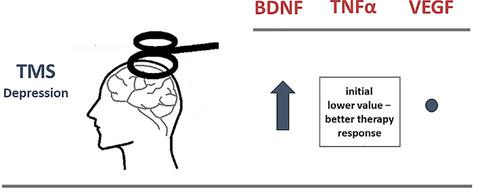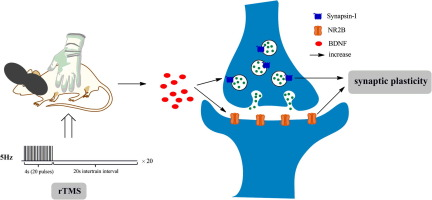Release time :2022-06-02
Source:support@yingchitech.com
Scan:2302
TMS is a non-invasive neuromodulation technology. The time-varying pulsed magnetic field can penetrate the skull, act on the central nervous system, generate induced currents, and cause a series of physiological and biochemical reactions, thereby affecting metabolism and neuronal excitability in the brain in order to treat psychiatric and neurological disorders.
TMS mainly excites or inhibits local cerebral cortex functions by adjusting the stimulation frequency, and treats diseases by bidirectionally regulating the balance between brain excitation and inhibition functions.
TMS technology is a model of the combination of electromagnetics and medicine. It is based on the application of Faraday's electromagnetic induction and electromagnetic conversion principles in the most fundamental physics in medicine. It is an emerging technology for research and development in the fields of learning, memory, language and emotion, etc.

High-frequency rTMS activates ion channels in the postsynaptic membrane through excitatory neurotransmitters and changes the intracellular calcium concentration in the postsynaptic cell. Intracellular calcium ion concentration has frequency dependence. Calcium ion acts as a second messenger to initiate a series of waterfall-like biochemical changes in the cell, and finally initiates DNA transcription to synthesize new proteins, Contributes to long-term potentiation (LTP) of synaptic function and structure, resulting in increased neural excitability. In contrast, low-frequency rTMS stimulation leads to a decrease in presynaptic calcium ion concentration, which in turn causes long-term depression (LTD) of synaptic function and structure, resulting in decreased neural excitability [1].
Relevant research evidence shows that the effect of rTMS excitation can promote the growth and regeneration of nerves. In the figure below, high-frequency magnetic stimulation increases the migration and regeneration of neural stem cells in the subventricular zone of the affected side and the infarcted area [2]. At the same time, rTMS can also promote the regeneration of brain-derived neurotrophic factor (BDNF). BDNF has a positive correlation with neuron growth, budding, anabolism and regulatory transmission [3].

Most studies have shown that rTMS can alter regional cerebral blood flow and cerebral cortical metabolism. Studies have shown that repeated transcranial magnetic stimulation of the left frontal lobe at 20 Hz in healthy people can increase cerebral blood flow in a short period of time. Except for the left and right posterior cerebral arteries and vertebral arteries, the average blood flow velocity increased to varying degrees, and the increase in the average blood flow velocity of the left anterior cerebral artery and the left middle cerebral artery was particularly obvious. So it shows that rTMS has a certain effect on regulating cerebral blood flow velocity [4].
In another study, the effect of TMS on blood flow metabolism in distant parts was verified by clinical experiments. Using rTMS to stimulate the left dorsolateral premotor cortex (dPMC) can also significantly change the blood oxygen level dependent (BOLD) signals of larger and more distant cortical areas. Blood oxygen level dependent (BOLD) signals include cingulate gyrus, ventral premotor cortex, auditory cortex, caudate nucleus, left temporal lobe, medial geniculate body, cerebellum [5].

rTMS can regulate the content of excitatory and inhibitory neurotransmitters, promote the secretion of monoamine neurotransmitters, optimize nerve function and reduce the nutrient secretion of neuronal factors stimulated by systemic inflammatory response.
An experimental study found that after low-frequency rTMS treatment, serum monoamine neurotransmitters: norepinephrine (NE), 5-hydroxytryptamine (5-HT), and dopamine (DA) increased; serum amino acid neurotransmitters glutamate (Glu) and aspartic acid (Asp) decreased; glycine (Gly) and γ-aminobutyric acid (GAB) increased; serum neurological function index brain-derived neurotrophic factor (BDNF) content increased; neuronal enolase (NSE) decreased.[6], Therefore, transcranial magnetic stimulation can effectively increase the production of excitatory hormones in the treatment of depression, thereby improving the condition.

The main stimulation modes of TMS are: single-pulse transcranial magnetic stimulation (spTMS), paired-pulse transcranial magnetic stimulation (ppTMS), repetitive transcranial magnetic stimulation (rTMS) and theta burst stimulation (TBS).
References
[1]Hess G , Donoghue JP. Long-term potentiation and long-term depression of horizontal connections in rat motor cortex[J]. Acta Neurobiologiae Experimentalis, 1996, 56(1):397-405.
[2] Jing L , Haiqing Z , Liying Z , et al. High-Frequency Repetitive Transcranial Magnetic Stimulation (rTMS) Improves Functional Recovery by Enhancing Neurogenesis and Activating BDNF/TrkB Signaling in Ischemic Rats[J]. International Journal of Molecular Sciences, 2017, 18(2):455.
[3]Agnieszka B , Katz D M . Cellular Mechanisms Regulating Activity-Dependent Release of Native Brain-Derived Neurotrophic Factor from Hippocampal Neurons[J]. Journal of Neuroscience, 2002, 22(23):10399-10407.
[4]杨德本, 谢建平, 王晓明. 重复经颅磁刺激对正常人脑血流灌注和速度的影响[J]. 中国临床康复, 2005, 9(37):2.
[5]Bestmann S , Jürgen Baudewig, Siebner H R, et al. BOLD MRI responses to repetitive TMS over human dorsal premotor cortex[J]. Neuroimage, 2005, 28(1):22-29.
[6]杨柳,刘玉山,吴宁渤,刘宏丽.低频重复经颅磁刺激对缺血+性脑卒中后抑郁患者血清神经递质、细胞因子的影响[J].海南医学院学报,2017,23(10):1434.